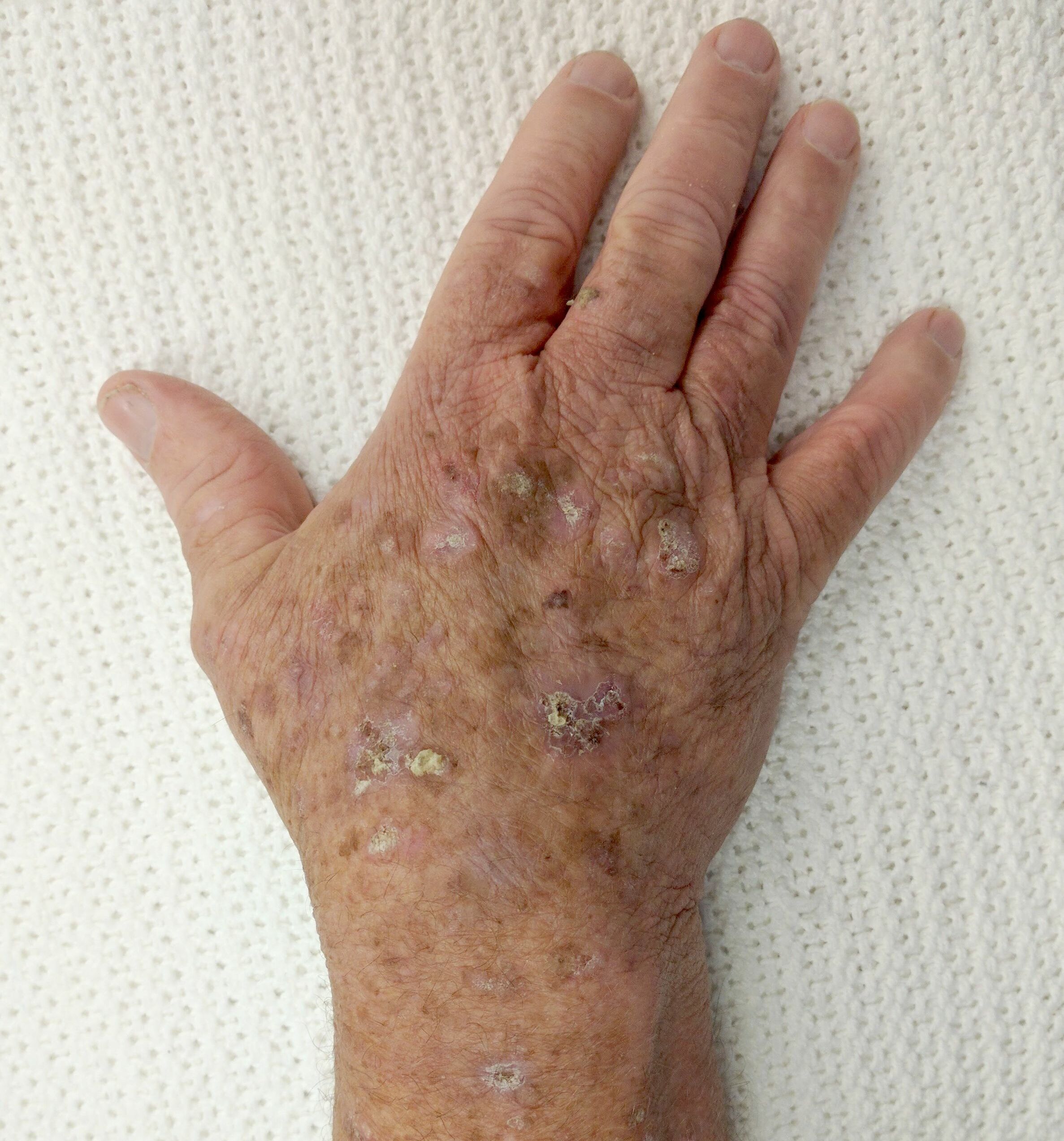What are the symptoms of actinic keratosis?
Actinic keratosis (AK) is a common precancerous skin condition caused by long-term sun exposure. It typically appears as rough, scaly patches on sun-exposed areas of the skin, such as the face, ears, neck, scalp, chest, backs of the hands, and forearms.
Symptoms of actinic keratosis may include:
- Rough, scaly, or dry patches on the skin
- Flat to slightly raised patches or bumps
- Pink, red, or brownish color
- Itching or burning in the affected area
- Sensitivity to touch
- In some cases, a hard, wart-like surface
Actinic keratosis patches may range in size from a few millimeters to a few centimeters. They can be easier to feel than to see and are often more easily noticed by touch. These patches can be more easily felt than seen, and they are often easier to notice by touch than by sight. If you notice any of these symptoms, it’s important to see a dermatologist for a proper evaluation, as actinic keratosis can progress to squamous cell carcinoma, a type of skin cancer, if left untreated.
What are the causes of actinic keratosis?
Actinic keratosis (AK) is primarily caused by long-term exposure to ultraviolet (UV) radiation from the sun or tanning beds. UV radiation damages the skin’s DNA, leading to the development of AK and increasing the risk of skin cancer. Other factors that can contribute to the development of AK include:
- Fair Skin: People with fair skin are more susceptible to sun damage and, therefore, are at a higher risk of developing AK.
- Age: AK is more common in older adults, as they have had more cumulative sun exposure over their lifetime.
- History of Sunburns: People who have had a history of sunburns, especially during childhood, are at a higher risk of developing AK.
- Living in Sunny or High-Altitude Areas: Living in areas with high levels of sunlight, such as sunny or high-altitude regions, can increase the risk of developing AK.
- Weakened Immune System: Conditions or medications that weaken the immune system can increase the risk of developing AK.
- Chemical Exposure: Exposure to certain chemicals, such as arsenic, coal tar, or certain pesticides, can increase the risk of developing AK.
It’s important to protect your skin from the sun by using sunscreen, wearing protective clothing, and seeking shade when outdoors for extended periods to reduce the risk of developing AK and other sun-related skin conditions. Regular skin checks and consultations with a dermatologist can help diagnose and manage AK early.
What is the treatment for actinic keratosis?
Treatment for actinic keratosis (AK) aims to remove the precancerous lesions to prevent them from developing into skin cancer. Treatment options may vary depending on the number of lesions, their location, and their characteristics. Some common treatments for AK include:
- Topical Medications: Prescription creams or gels containing medications like imiquimod, 5-fluorouracil (5-FU), ingenol mebutate, or diclofenac can be applied to the affected skin to help remove AK lesions.
- Cryotherapy: Liquid nitrogen is used to freeze and destroy AK lesions. This is a common treatment for isolated or few AK lesions.
- Curettage and Electrodesiccation: This involves scraping off the AK lesions with a curette (a sharp instrument) and then using an electric current to destroy any remaining abnormal cells.
- Photodynamic Therapy (PDT): A photosensitizing agent is applied to the skin, which is then activated by a light source. This destroys the AK lesions.
- Chemical Peels: Chemical solutions are applied to the skin to peel away the top layer, including AK lesions.
- Laser Therapy: Laser light is used to destroy AK lesions.
- Surgery: In some cases, surgical removal of the AK lesions may be necessary, especially if they are large or thick.
It’s important to consult with a dermatologist to determine the most appropriate treatment for your AK based on the number of lesions, their location, and your overall health. Regular skin checks and sun protection measures are also essential to prevent the recurrence of AK and reduce the risk of developing skin cancer.

Leave a Reply
You must be logged in to post a comment.